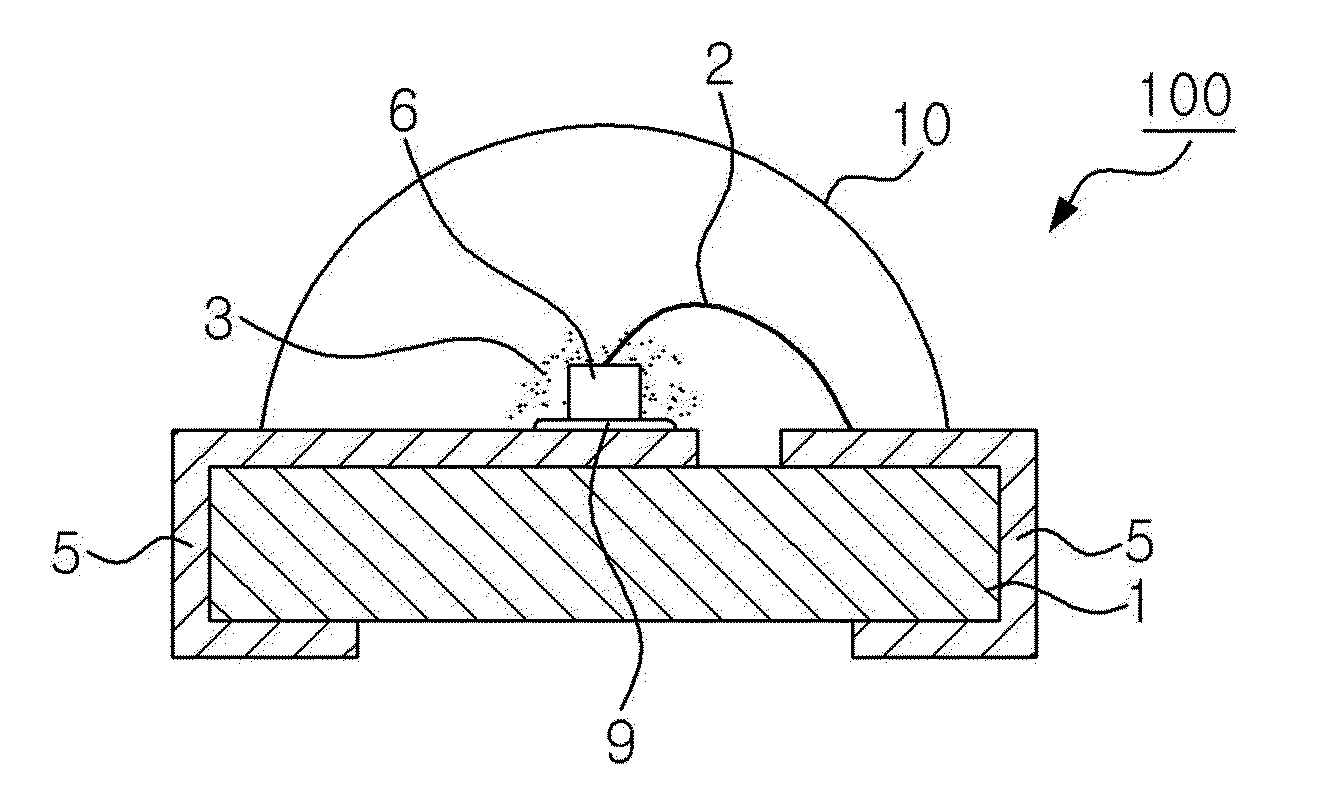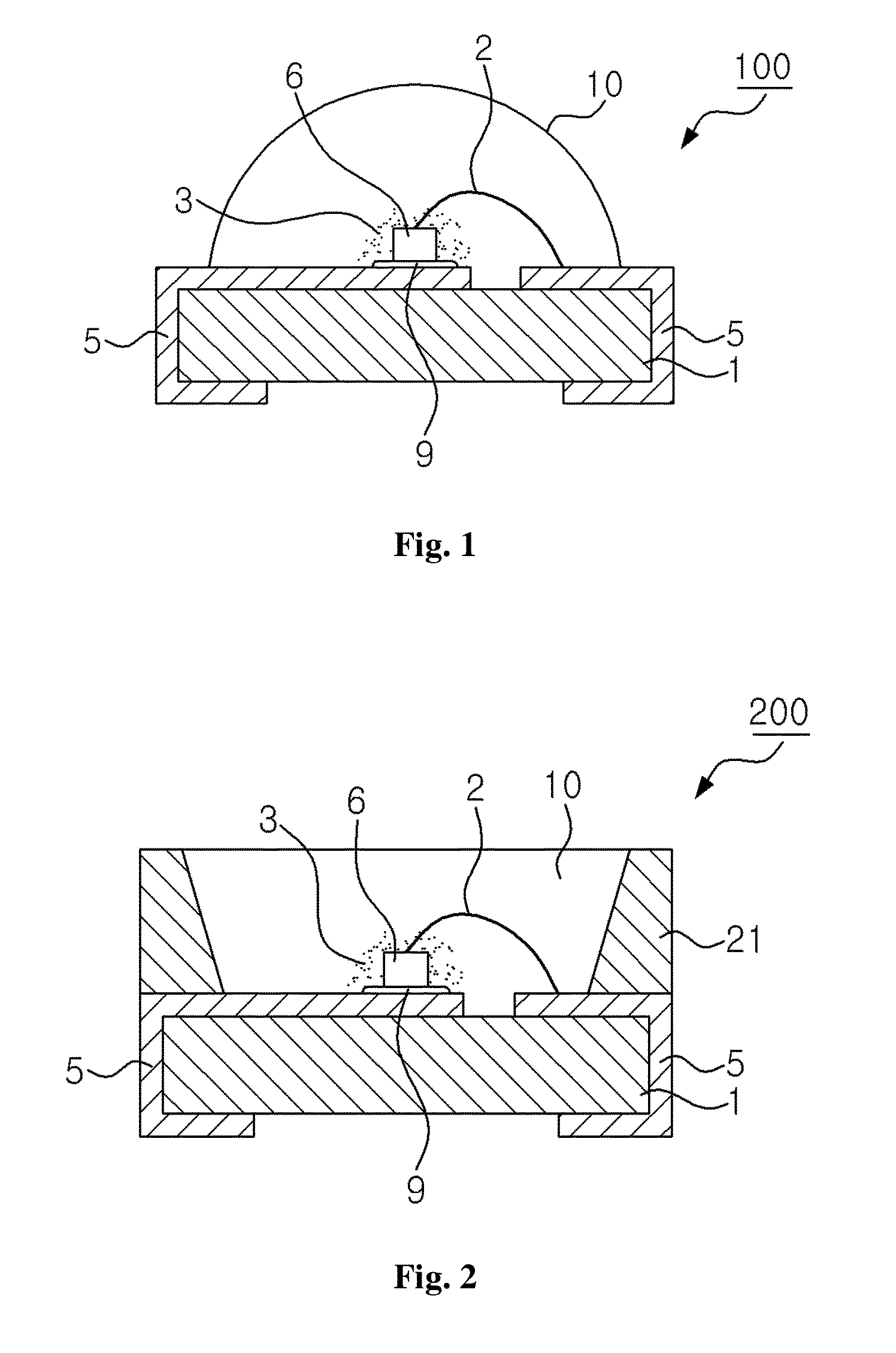Light emitting device having surface-modified quantum dot luminophores
a luminophores and surface modification technology, applied in the direction of luminescent compositions, semiconductor devices, luminescent compositions, etc., can solve the problems of low radiation stability, high sensitivity of luminophores to water, air humidity, other environmental factors, etc., and achieve the effect of improving the operational li
- Summary
- Abstract
- Description
- Claims
- Application Information
AI Technical Summary
Benefits of technology
Problems solved by technology
Method used
Image
Examples
working example a1
[0074]Working Example A1 describes the preparation of a luminophore provided with a fluorinated surface layer and having the base lattice composition Sr2.9Ba0.01Ca0.05SiO5:Eu0.04 according to an exemplary embodiment of the present invention, which is described as sample F-103 together with its optical data in Table 1, and the emission spectrum that is designated as “3” in FIG. 6a.
[0075]Table 1 contains optical and moisture stability data of europium-activated strontium oxyorthosilicate luminophore samples which have been treated with different amounts of NH4F. To synthesize the corresponding luminophore matrix, the stoichiometric amounts of SrCO3, BaCO3, CaCO3, Eu2O3, and SiO2 and 0.2 mol of NH4Cl are mixed vigorously and then subjected, in corundum crucibles, to a 5-hour calcination process at 1400° C. in an N2 / H2 atmosphere containing 2% hydrogen. After the calcination process has ended, the calcinated material is homogenized, ground and washed with H2O. Subsequently, 100 g of th...
working example a2
[0076]To prepare the luminophore containing sample F-202 according to an exemplary embodiment of the present invention, the optical data of which are specified in Table 2 and the emission spectrum of which is designated as “4” in FIG. 6a, 100 g of the luminophore matrix described in Working Example A1 are mixed with 2.474 g of NH4HF2. Table 2 contains optical and moisture stability data of europium-activated strontium oxyorthcsilicate luminophore samples which have been treated with different amounts of NH4HF2. In this case, the fluorinated surface layer is applied by wet-chemical precipitation by taking the mixture in 1 L of deionized water and 400 g of glass beads on a roll mill. Treatment for one hour is followed by the removal of the coated luminophore from the solution and an after-treatment analogous to Working Example A1.
working example a3
[0077]Here, 30 g of the luminophore produced according to Working Example A2 are heat treated in a corundum crucible at 400° C. in an N2 / H2 atmosphere containing 35% hydrogen for 60 minutes. After cooling, the sample F-202T, the optical data of which are specified in Table 2 and the emission spectrum of which is designated as “5” in FIG. 6a, is homogenized by screening to produce an exemplary embodiment of the present invention.
PUM
| Property | Measurement | Unit |
|---|---|---|
| temperatures | aaaaa | aaaaa |
| temperatures | aaaaa | aaaaa |
| temperatures | aaaaa | aaaaa |
Abstract
Description
Claims
Application Information
 Login to View More
Login to View More - R&D
- Intellectual Property
- Life Sciences
- Materials
- Tech Scout
- Unparalleled Data Quality
- Higher Quality Content
- 60% Fewer Hallucinations
Browse by: Latest US Patents, China's latest patents, Technical Efficacy Thesaurus, Application Domain, Technology Topic, Popular Technical Reports.
© 2025 PatSnap. All rights reserved.Legal|Privacy policy|Modern Slavery Act Transparency Statement|Sitemap|About US| Contact US: help@patsnap.com



